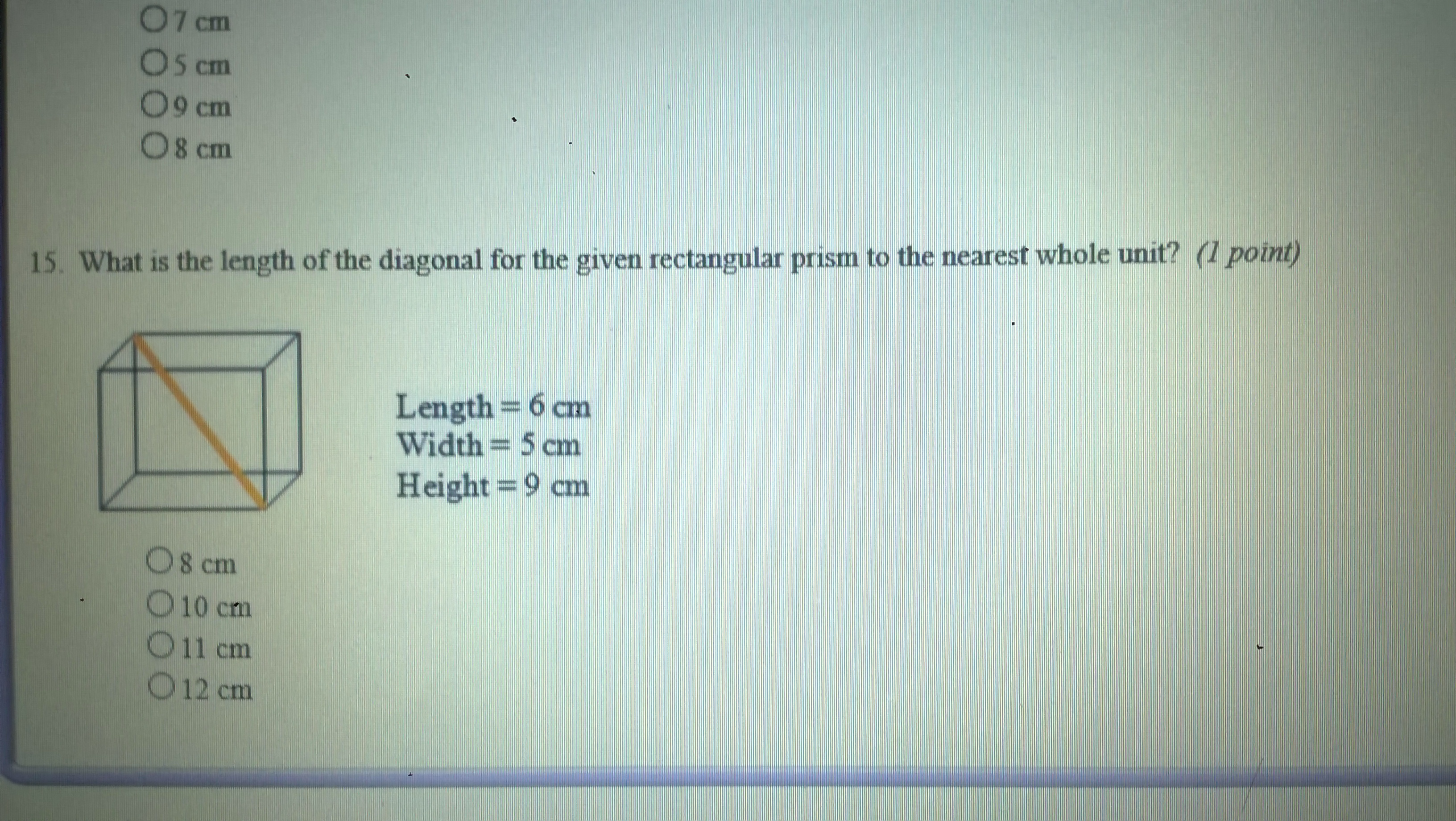Volume question?

3 Answers
Explanation:
This is a generalisation of Pythagoras' theorem to
The length of the diagonal is:
sqrt(6^2+5^2+9^2) = sqrt(36+25+81) = sqrt(142) ~~ sqrt(144) = 12
The answer is 12 cm.
Explanation:
Firstly, you draw a diagonal line through the base of the rectangular prism. Now you get two triangles and can find the hypotenuse.
Now you can make a triangle and imagine that the diagonal line going through the whole prism is the hypotenuse and calculate it with the given height.
If you take the root out of 142 and turn it into decimal, you get 11.916...
Explanation:
Similar to the Pythagoras Theorem, the length of the diagonal for a rectangular prism is:
Therefore,
The formula, by the way, can be used to find the diagonal of a similar situation in the 4D. (You just need to add another dimension squared)



